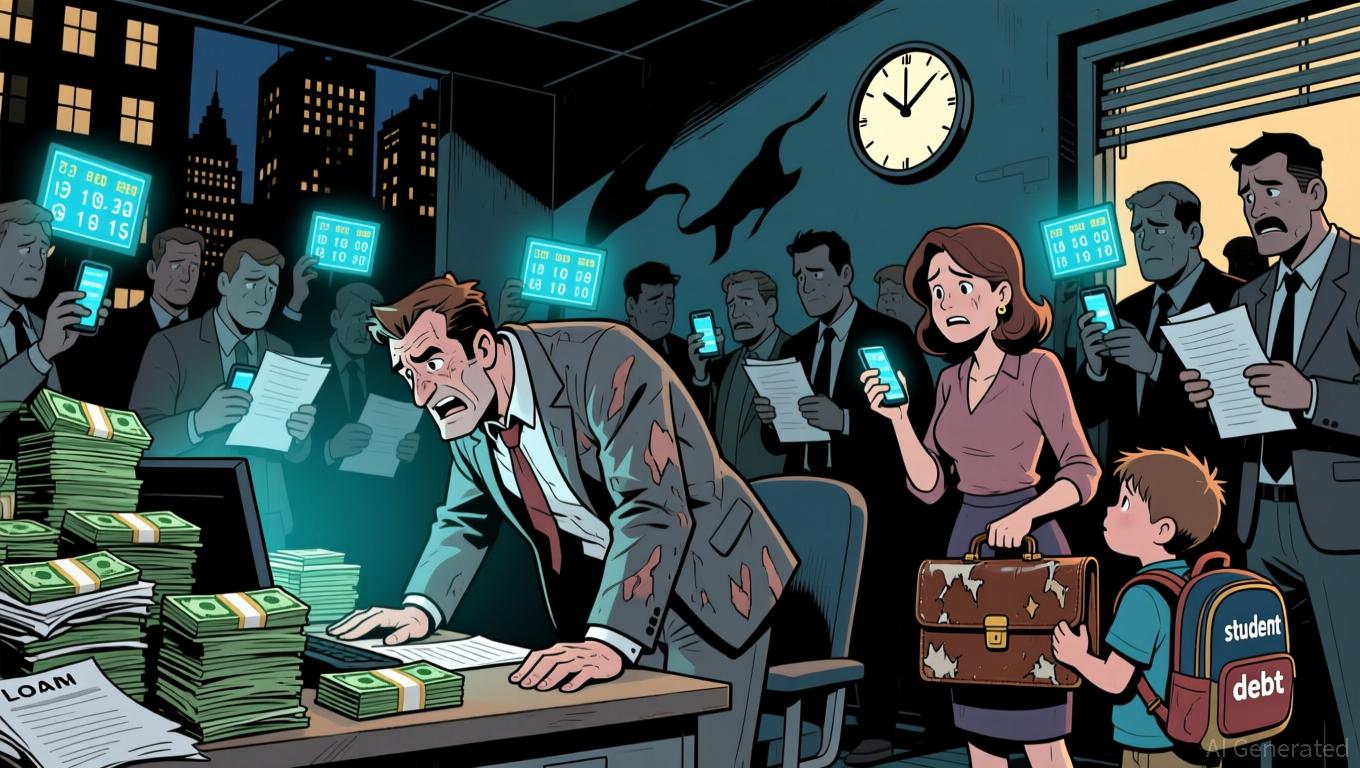AAVE drops 6.41% in 24 hours as DeFi landscape evolves and infrastructure initiatives become central
- Aave (AAVE) fell 6.41% in 24 hours amid DeFi capital reallocation to lending protocols. - Despite short-term declines, Aave maintains foundational role in DeFi's infrastructure-driven growth. - Technical analysis and backtests show no consistent rebound patterns after sharp price drops. - Upcoming credit delegation upgrades and GHO stablecoin development aim to boost engagement metrics.
As of NOV 3 2025,
Aave (AAVE) appears to be regaining traction as capital in the DeFi sector returns to lending protocols, underscoring its essential position within decentralized finance. Although the token recently fell 6.41% in a single day, the overall sentiment remains positive due to ongoing infrastructure developments. The DeFi industry is increasingly prioritizing platforms that deliver scalable and effective financial solutions, with Aave emerging as a central figure in this evolution.
Market indicators point to a complex outlook for Aave. Despite the recent sharp decline, analysts are evaluating its performance against broader DeFi movements. Experts note that Aave’s foundational status as a lending protocol could offer resilience in a market known for its fluctuations. Forthcoming enhancements to Aave’s credit delegation system and the GHO stablecoin are expected to boost user engagement and growth, which may impact its price direction in the near future.
Backtest Hypothesis
To assess how the market typically reacts after significant Aave price corrections, a backtest was performed on all occasions since 2022 when Aave dropped by 10% or more in a single day. The analysis reviewed returns over the subsequent 30 days. Out of 36 such events, the average return by day 30 was around -0.5%, showing no meaningful outperformance versus simply holding the asset.
The success rate for trades following these sharp declines hovered near 50%, with a slight increase on the 9th and 10th days after the drop. However, there was no persistent pattern of excess returns, and recoveries were inconsistent, lacking a clear trend in volatility or bounce-back. These results indicate that past steep declines in Aave have not consistently led to strong short-term recoveries, so investors should be cautious about viewing such drops as reliable trading opportunities.
Disclaimer: The content of this article solely reflects the author's opinion and does not represent the platform in any capacity. This article is not intended to serve as a reference for making investment decisions.
You may also like
Supreme Court Decision on Tariffs May Require $140 Billion in Refunds and Prompt Federal Reserve to Lower Rates
- UBS warns a Supreme Court ruling against Trump's tariffs could force $140B refunds, straining U.S. fiscal resources and prompting potential Fed rate cuts. - The refunds stem from 39% Swiss tariffs deemed potentially unlawful, with fiscal impact equivalent to 7.9% of 2025's projected budget deficit. - Legal challenges highlight executive overreach risks, while reduced tariffs could boost consumer spending and ease inflation, creating room for Fed easing. - Swiss business leaders have lobbied Trump to lowe

Ethereum Updates: TRON's GreatVoyage: Strengthening USDT's $122B Network to Compete with Ethereum

Arm's Low-Power Architectures Overcome AI Energy Constraints, Fuel 34% Growth in Revenue
- Arm Holdings reported $1.14B Q3 revenue, 34% YoY growth surpassing forecasts, driven by AI/data center demand. - Royalty revenue rose 21% to $620M while licensing revenue jumped 56% to $515M, reflecting strong IP adoption. - Strategic shift to develop full-chip solutions via Compute Sub Systems aims to compete with Nvidia/Amazon in AI hardware. - Parent company SoftBank explored Arm-Marvell merger to strengthen AI infrastructure, highlighting industry consolidation trends. - 20 "buy" ratings and $155 pri

Fed Faces a Choice: Boost Growth or Curb Mounting Debt?
- U.S. household debt hit $18.59 trillion in Q3 2025, driven by rising credit card, student loan, and home equity debt with delinquency rates at multi-year highs. - The Fed initiated rate cuts amid slowing job growth but faces a dilemma: easing economic strain risks inflating a consumer debt bubble while tightening worsens defaults. - Retailers, banks, and auto lenders face fallout as discretionary spending declines and loan defaults rise, while essential goods and debt collectors see increased demand. - P
